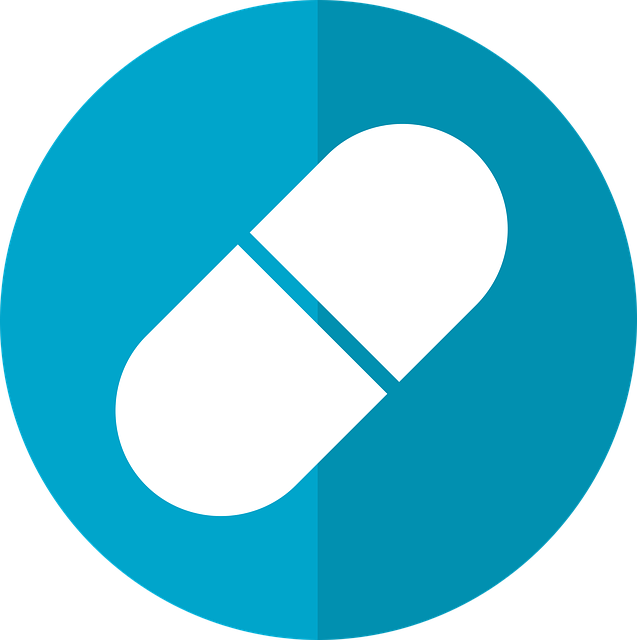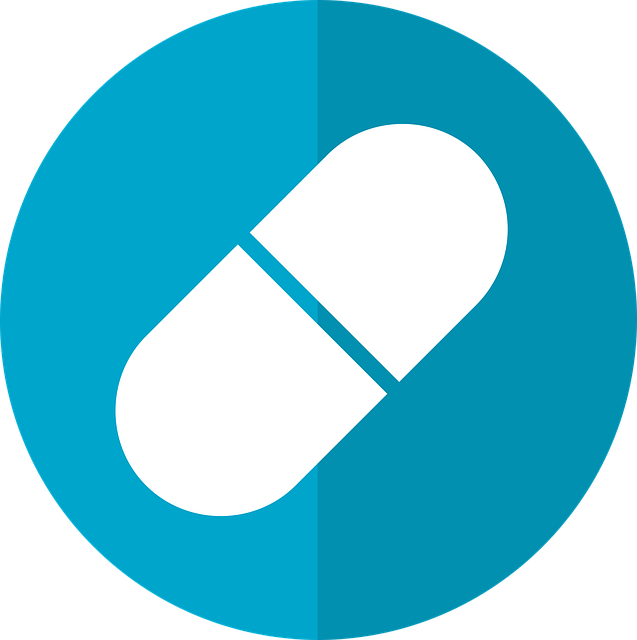GLP-1 drugs, mimicking natural glucagon-like peptide-1 hormone effects, have revolutionized type 2 diabetes management. They control blood sugar by enhancing insulin secretion and reducing glucagon release, while also promoting weight loss without hypoglycemia. With a dual mechanism of action, these medications offer improved glycemic control, reduce long-term complication risks, and enhance quality of life for patients. Future innovations in delivery methods, formulations, and personalized medicine will further tailor treatments to individual needs. Despite side effects like nausea and gastrointestinal issues, GLP-1 drugs' long-term advantages, including reduced nerve damage and kidney disease progression, make them a significant advancement in diabetes care.
“Revolutionizing diabetes management, GLP-1 agonist treatments have emerged as powerful tools in recent years. This article delves into the transformative potential of these innovative GLP-1 drugs, exploring their mechanism of action and diverse applications. From traditional injectables to cutting-edge delivery methods, we uncover emerging trends like personalized medicine and real-world clinical trial data. Additionally, we address common challenges and side effects, highlighting the profound impact of GLP-1 agonist treatments on patient lives.”
Unlocking the Potential: The Rise of GLP-1 Agonists

The field of diabetes management has witnessed a significant transformation with the emergence and rapid growth of GLP-1 agonist treatments. These drugs, mimicking the effects of the natural hormone glucagon-like peptide-1 (GLP-1), have unlocked new possibilities for effective blood sugar control. By stimulating insulin secretion in a glucose-dependent manner and inhibiting glucagon release, GLP-1 agonists offer a dual approach to managing diabetes.
This innovative class of drugs has gained prominence due to their remarkable ability to enhance insulin sensitivity, reduce appetite, and promote weight loss—all without the risk of hypoglycemia. The rise of GLP-1 agonist treatments reflects a significant step forward in diabetes care, providing patients with a more natural and balanced approach to maintaining stable blood sugar levels.
Understanding GLP-1 and its Role in Diabetes Management

Glucagon-like peptide-1 (GLP-1) is a hormone produced in the gut that plays a crucial role in regulating blood sugar levels. It stimulates insulin secretion when blood glucose is high and suppresses glucagon release, helping to lower blood sugar. This dual action makes GLP-1 a valuable target for diabetes management. Over the years, advancements in understanding GLP-1’s mechanisms have led to the development of GLP-1 drugs, offering effective treatments for type 2 diabetes.
These drugs mimic or enhance the effects of natural GLP-1, improving insulin sensitivity and reducing hepatic glucose production. They are particularly notable for their ability to promote weight loss, an added benefit for patients struggling with obesity and related health issues. The introduction of GLP-1 agonists has significantly improved diabetes care, providing better blood sugar control and potentially reducing the risk of long-term complications.
Traditional GLP-1 Drugs: How They Work and Current Applications

GLP-1 drugs, also known as glucagon-like peptide-1 agonists, are a class of medications designed to mimic the natural hormone GLP-1, which plays a crucial role in regulating blood sugar levels. These traditional GLP-1 drugs work by enhancing insulin secretion when blood glucose is high and suppressing glucagon release when it’s low, helping to lower blood sugar levels. They’ve been approved for treating type 2 diabetes, improving glycemic control while reducing the risk of hypoglycemia.
Currently, these drugs are administered via injections or, more recently, through once-weekly oral tablets. Their applications extend beyond diabetes management as research explores their potential in weight management and cardiovascular disease prevention. The mechanism of action, focusing on both insulin secretion and glucagon inhibition, makes GLP-1 drugs a game-changer in metabolic health treatment, offering improved quality of life for patients with diabetes and related conditions.
Emerging Innovations: New Delivery Methods and Formulations

The future of GLP-1 agonist treatments looks promising, with emerging innovations focused on enhancing delivery methods and formulations. One notable advancement is the development of new injection systems that offer improved user convenience and adherence to treatment regimens. These innovative devices aim to simplify administration, making it easier for patients to manage their diabetes effectively. Additionally, researchers are exploring alternative delivery routes, such as oral tablets with enhanced absorption or even transdermal patches, which could potentially provide a more discreet and patient-friendly option for GLP-1 drug therapy.
Furthermore, the field is witnessing the creation of advanced formulations designed to improve drug stability, solubility, and bioavailability. These developments aim to enhance the overall efficacy and safety profile of GLP-1 drugs, addressing potential limitations associated with current treatments. With these emerging innovations, the landscape of GLP-1 agonist therapies is set to evolve, potentially offering more personalized and convenient options for diabetes management in the future.
Personalized Medicine: Tailoring GLP-1 Treatments to Individual Needs

The concept of personalized medicine is transforming the way we approach GLP-1 agonist treatments. By tailoring medications to individual patient needs, healthcare providers can optimize results and improve outcomes. This precision medicine approach takes into account unique genetic, lifestyle, and environmental factors that influence how a person responds to GLP-1 drugs. For example, some patients may require lower doses for safety reasons, while others might benefit from higher doses for better blood sugar control.
Personalized medicine also involves considering comorbidities and other medications a patient is taking. This holistic view ensures that GLP-1 treatments are safe and effective, addressing not just blood sugar levels but overall health and well-being. With advancements in technology and our understanding of individual biology, the future of GLP-1 drugs looks promising, with even greater customization and improved quality of life for those managing diabetes and related conditions.
Clinical Trials and Real-World Data: Shaping the Future of GLP-1 Therapy

Clinical trials and real-world data play a pivotal role in shaping the future of GLP-1 therapy. Rigorous clinical studies have been instrumental in establishing the safety and efficacy of GLP-1 drugs, demonstrating their ability to improve glycemic control and reduce cardiovascular risks. However, as these treatments move from controlled trial environments into routine clinical practice, real-world data becomes increasingly valuable. This data provides insights into how GLP-1 drugs perform in diverse patient populations and various healthcare settings, offering a more nuanced understanding of their long-term benefits and potential challenges.
By analyzing large datasets from everyday clinical practice, researchers can identify patterns, rare adverse events, and population-specific responses to GLP-1 drug treatments. This information is crucial for refining treatment guidelines, personalizing patient management, and ensuring optimal outcomes for individuals receiving GLP-1 therapy. As the field advances, integrating clinical trials and real-world data will remain essential for advancing knowledge and improving care for patients with diabetes and related conditions.
Challenges and Side Effects: Addressing Patient Concerns

Despite their proven benefits, GLP-1 drugs aren’t without challenges and potential side effects that can cause patient concern. One of the main issues is nausea and vomiting, which can be particularly problematic for those new to the treatment. This side effect often subsides as the body adjusts to the medication, but it remains a valid worry for some patients. Additionally, GLP-1 drugs may cause gastrointestinal issues like diarrhea or constipation, impacting quality of life for individuals already dealing with digestive disorders.
Another concern revolves around the injection method, which can deter patients who prefer oral medications. While manufacturers continue to develop more user-friendly delivery systems, the current need for injections can be a significant barrier to adherence, especially for those managing multiple chronic conditions. Furthermore, as with any medication, there’s always the risk of allergic reactions or interactions with other drugs, necessitating close monitoring and open communication between patients and healthcare providers.
The Impact on Patient Lives: Success Stories and Long-Term Benefits

The impact of GLP-1 agonist treatments on patient lives has been profound, with numerous success stories emerging from clinical trials and real-world applications. These innovative drugs, mimicking the effects of the natural hormone GLP-1, have revolutionized diabetes management. Many patients have achieved remarkable blood sugar control, leading to a significant reduction in long-term complications associated with diabetes, such as nerve damage, kidney disease, and cardiovascular issues.
GLP-1 drugs not only aid in glycemic control but also offer other benefits. They promote feelings of satiety, helping patients lose weight and reduce the risk of obesity-related health problems. Moreover, some GLP-1 agonists have shown promise in slowing down the progression of kidney disease in people with type 2 diabetes. These long-term advantages underscore the transformative potential of GLP-1 agonist treatments, improving the overall quality of life for individuals living with diabetes.
